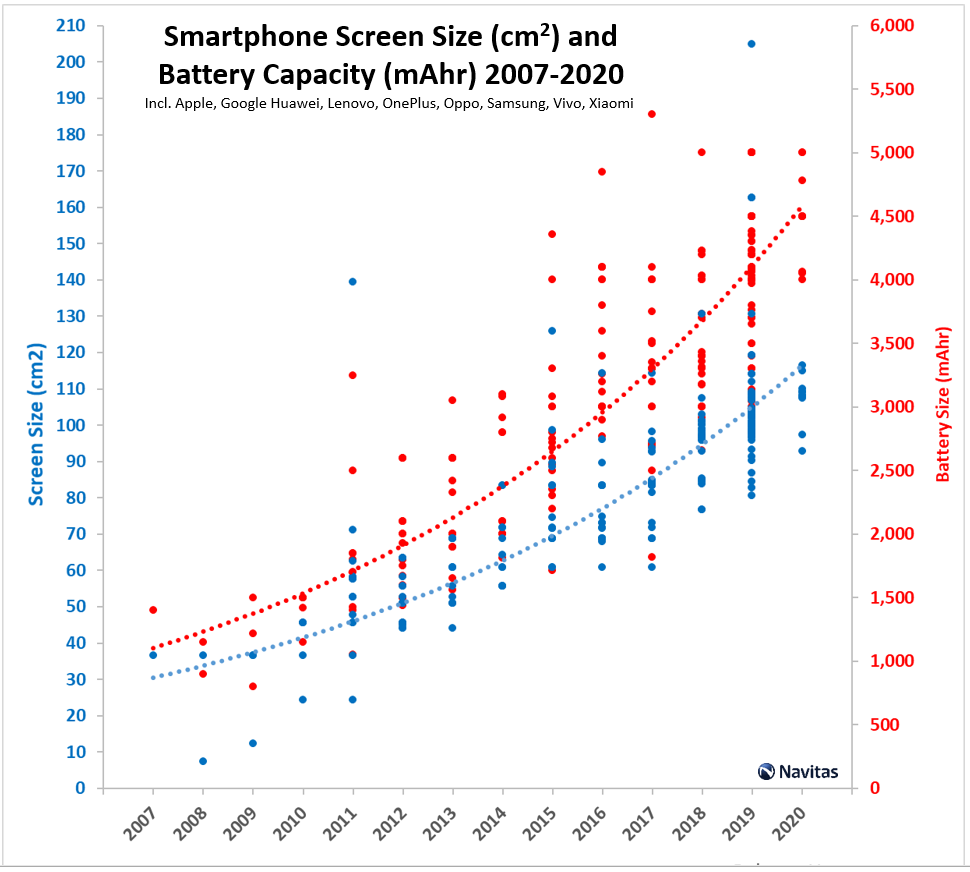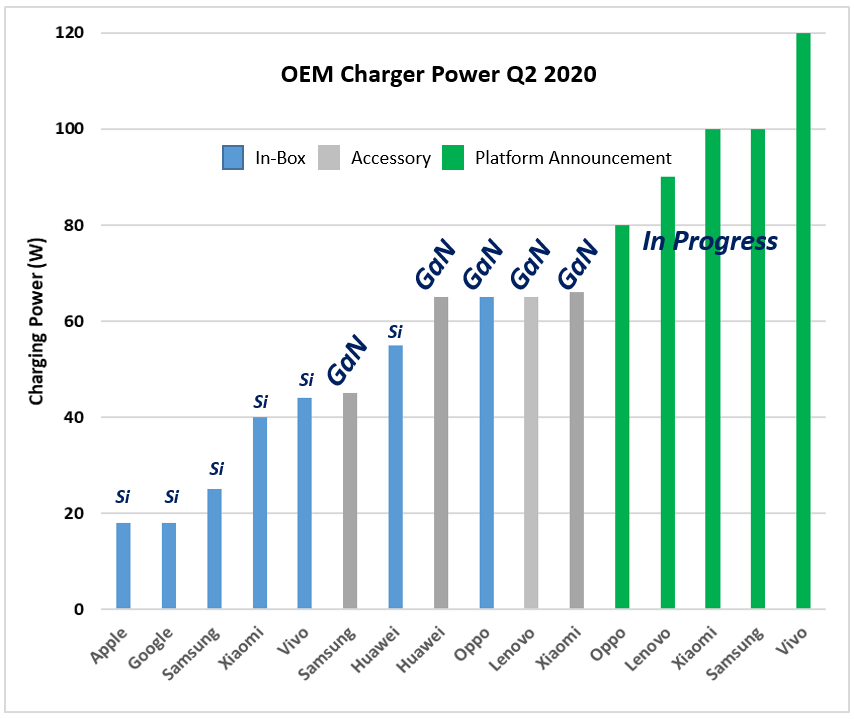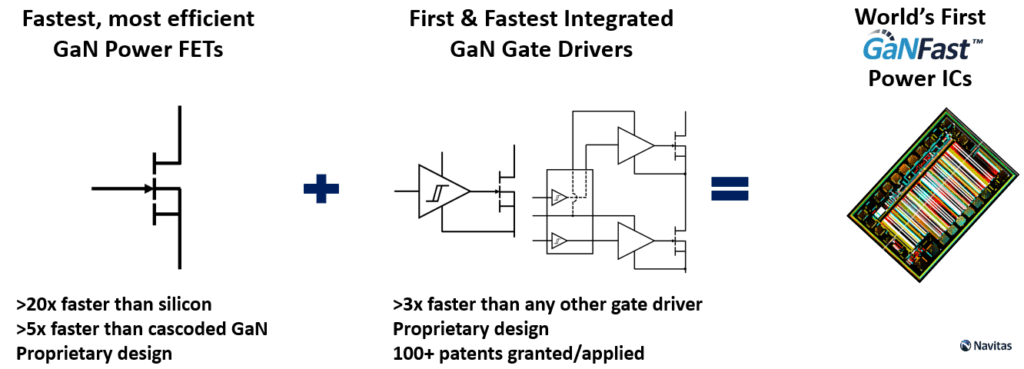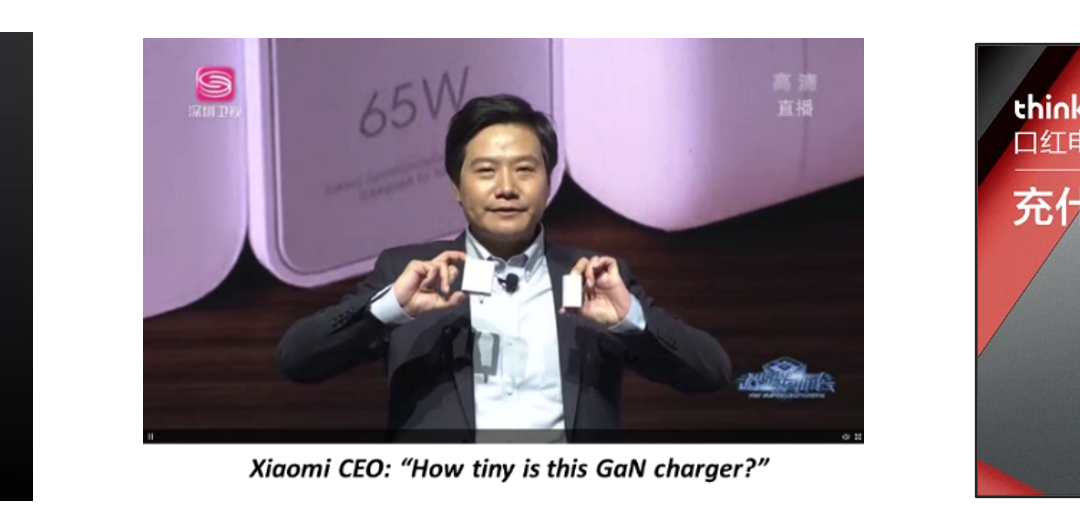TW Electronics recently interviewed Stephen Oliver of Navitas to discuss the way GaN, and in particular, products using GaNFast ICs are matching the higher demands of today’s electronics and providing 3x faster charging in half the size and weight of their silicon counterparts.
- In the year 2020, what are the important advances/trend of GaN used in consumer electronics? Except for quick charge, what are other consumer electronics worth knowing?
Navitas: 2020 is the year when gallium nitride (GaN) overshadows silicon in fast chargers for smartphones, tablets and laptops. Over the last few years, we have seen a big increase in screen size and battery size – which means more power needed for fast-charging smartphones, with Oppo, Vivo, Lenovo and Xiaomi driving over 65W. After initial wins in ‘aftermarket’ companies like AUKEY, Anker, RAVpower and Belkin, we have seen OEMs like Lenovo, Samsung, Oppo and Xiaomi adopt GaN for accessories and ‘in-box’ mass-production fast chargers.
Screen / battery size:

Power rating and GaN charger adoption:

- What are the challenges of developing consumer electronics GaN products? How to overcome these challenges? What are the strengths of Navitas in the industry?
Navitas: For any new technology, the key to success is finding – or creating – a market where the features of the new technology become benefits that are appreciated by the customer. GaN’s inherent 1000x speed advantage over Si translates to the benefits of 3x faster charging in half the size and weight of old, slow Si-based chargers. This is only possible using Navitas’ GaNFast power ICs with proprietary monolithic integration of GaN FET, GaN logic and GaN digital circuits.
GaNFast Monolithic integration:

Other solutions are too big, too slow, too complex and too expensive. With GaNFast power ICs, over 100 patents and with very experienced, extremely-skilled engineers dedicated to high-frequency, high-efficiency, high-density systems, Navitas is the leader in the GaN industry.
When AUKEY use GaNFast to deliver 61W in a charger 65% smaller than Apple, consumers are very interested. When Mr. Jun LEI, Xiaomi’s CEO holds up a GaNFast charger during the launch of the flagship Mi 10 and Mi 10 PRO, and says “This is so coooool!”, investors around the world pay attention. GaN’s very small die size and ability to shrink the size and cost of passive components like magnetic transformers, EMI filters and output capacitors, means that the new generation has a retail price point lower than the old, slow Si chargers. When Lenovo take their previously best-in-class Si-based 65W ‘lipstick’ charger, add the feature of folding AC pins, shrink by 25% and have a lower retail price – it’s the beginning of the end for silicon.
- What makes the application of GaN in industrial products and consumer electronics different?
Navitas: The answer again is ‘speed’ – this time in the speed of new-technology adoption. The consumer market has grasped GaN quickly, the industrial market is slower, more conservative – and with different demands. Navitas pioneered reliability testing for high-frequency eMode GaN-on-Si, and was a founder member of the JEDEC committee on GaN reliability. We have excellent field quality performance – running at 0 ppm with millions of pieces shipped – and the industrial customers are now comfortable with the combination of reliability testing and field performance to introduce GaN-based products to kW+.
- What is the trend of GaN used in consumer electronics in the next three years?
Navitas: More power, faster charging, smaller size and lower cost. The upcoming Lenovo Legion gaming phone uses a 90W charger – for a phone! The USB-C socket with power delivery is also making waves in the industry. Why buy and carry around 3 heavy, bulky chargers when I can carry only one, tiny adapter like the Baseus 65W 2C1A that can fast-charge 3 things at the same time?
Apple chargers and Baseus 65W 2C1A size, weight and US retail pricing:

- According the trend, what are the strategies or highlight products of Navitas? What are the feature of these strategies and products?
Navitas: It’s speed, speed, speed again. To meet the market needs, our roadmap is laser-focused on helping power designers to exploit the high-speed performance of GaN. We already have an easy-to-use, ‘digital-in, power-out’ building block which makes design, prototyping and time to market faster and faster. The strategy is more features, more integration, higher frequencies, new voltages, new topologies and strong partnerships with controller, magnetics, and capacitor companies in the high-frequency (MHz+) eco-system. GaN is fast, very fast. GaNFast power ICs are the key to creating customer advantage.
- For the trend of GaN used in consumer electronics, what are your opinions and plans of market layout in the long term?
Navitas: Consumers want to work hard, play hard and charge less. They don’t want to be tied down waiting for their phone to charge. This means more power – in a smaller, lighter format. We’ll also see the ‘conservative’ companies like Apple and Google move to higher power and faster charging. There may still be a legacy market for low-performance, low-power (<20W?) Si-based chargers but mostly only in stationary applications. From the initial mobile consumer market, we’ll see adoption in higher-power, non-mobile systems like all-in-one computers and 4K TVs, where very low-profile systems are needed and where GaN’s high-frequency performance enables the use of high-power, cost-effective planar magnetics. The addressable market for GaN power ICs today is over US$1B – and there will be a very fast adoption of GaN in the next few years.

Recent Comments